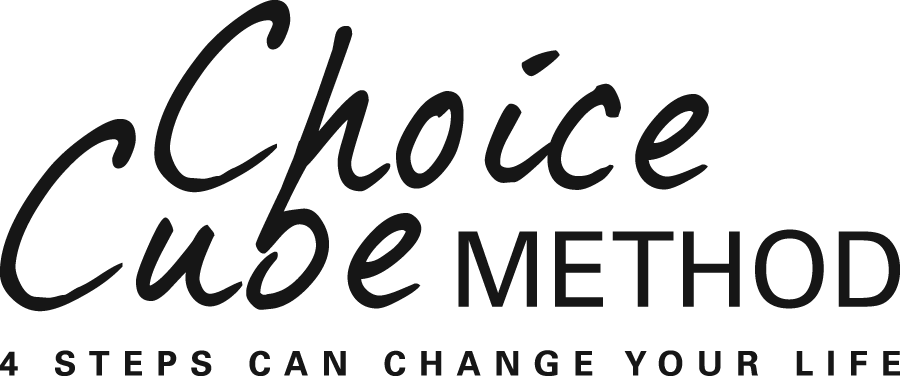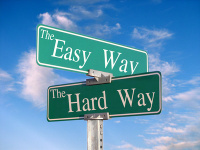"Mommy!"
/ Terry, a heavy-set woman of forty, was on the floor curled-up, crying. An early childhood memory about her mother was surfacing and it seemed more than she could handle. Old feelings of pain and confusion seemed fresh, almost new. The realization flooded her, overwhelmed her. She heard herself saying out loud, She wanted me to be totally under her domination and control. She wanted me to be her little puppet. Terrified, Terry held her breath. She felt like that little girl again.
Terry, a heavy-set woman of forty, was on the floor curled-up, crying. An early childhood memory about her mother was surfacing and it seemed more than she could handle. Old feelings of pain and confusion seemed fresh, almost new. The realization flooded her, overwhelmed her. She heard herself saying out loud, She wanted me to be totally under her domination and control. She wanted me to be her little puppet. Terrified, Terry held her breath. She felt like that little girl again.
No One Will Help Me Terry thought of calling someone. No, maybe she could write it out. Then she collapsed, feeling that there were no answers. No one would rescue her. Just as in her childhood, when she had no one to rescue her, there was no one to help her now. What could she do? Terry lay there, overwhelmed with the terror of having her will completely controlled by her mother. Her moaning increased, punctuated by the words, No one can help me. No one can help me.
Good News! I Can Be My Own Parent Now, here’s some good news. Terry was seeing a therapist who just that week quoted an Alcoholics Anonymous saying, “It’s never too late to have a happy childhood.” The therapist had suggested that the key to the quote was self-parenting. She also helped Terry understand the two major reasons why we can effectively be our own parents.
Loving Parent, Wise Adult, Feeling Child First, we all have different ways of being in the world. For example, we feel one way with a partner and another way with a child. These different ways of thinking, feeling, and acting can be called “ego states.”
The three ego states of self-parenting are: The loving parent who has only one emotion--understanding and accepting love. In contrast there’s the wise adult who balances the loving parent by being totally rational and analytical with no feelings at all. (It’s the wise adult’s job to help the feeling child make sense of things.) Finally, there’s the feeling child. This is the part of the inner family who carries all emotions from pain to joy.
Second, we can have a functional inner family because our brain blurs the distinction between reality and what we imagine. This means for example, that when we imagine our loving parent tenderly holding us, our body and mind record that as really happening! Though this is confirmed by current brain research, Terry found it astonishing.
Terry Finds Hope Returning to Terry who was still on the floor, broken-hearted, crying, something had changed. She had hope. “Maybe,” she thought, “maybe I can become my own loving parent, wise adult, and feeling child and work through this memory to create a better outcome. She decided to give it a try and sat up.
For the moment, Terry became the loving parent. Looking around, in her mind’s eye she saw her feeling child—her little girl--curled in a ball, lying on the ground. Ah, there she was. In her imagination, as the loving parent, Terry reached out for the little girl and asked if she would come and let Terry hold her. To her amazement, the little girl uncurled, came over to Terry’s loving parent and crawled up into her lap. In Terry’s imagination, as the loving parent, she gently wrapped her arms around her feeling child and drew her close to her heart. It seemed strange, but at that moment, she also felt like the little girl. But now she felt loved and safe.
Terry Finds Some Answers The loving parent and feeling child stayed in that embrace for a few moments. Then it seemed to Terry that the wise adult came on the scene. The wise adult, as mentioned, has no feelings. It’s the wise adult’s job to be totally rational and analytical and to help the feeling child make sense of things. In fact, that’s exactly what the wise adult did for Terry’s little girl.
The wise adult affirmed Terry’s impression, that her mother wanted to control and dominate her totally. But the wise adult also explained that Terry had survived and broken free of her mom. The wise adult helped the feeling child understand that her terror of being swallowed-up by her mother was a real and legitimate feeling but that she that she could label that fear and let it go—release it. Then she could unlock her thinking and move on with life.
There's More Work Ahead Fortunately, in therapy, Terry had also learned some simple but powerful tools for labeling and releasing negative emotions. Using one of them, she felt immediate relief from the terror. But she had more work to do. Once the terror and fear diminished, a white-hot rage surfaced. She was using a tool to help her let go of the anger when oops, another emotion surfaced, and another, and another. She worked for almost forty minutes using the tool to let go of one negative emotion after another until she was so exhausted she just fell asleep.
Change Is Both Psychological and Physical! Terry did a fantastic piece of trauma work. But change is as physical as it is psychological. Her thoughts and feelings were not only in her mind, they were in her body as well. Like connecting ski trails, those thoughts and feelings were embedded in connecting nerve pathways in her brain and body.
Terry’s task was to stop going over the old nerve pathways, which strengthened them, as well as the thoughts, feelings and desires embedded in them. She would have to do something different to create new, more positive pathways. Though this requires time and repetition,
Time and repetition required Terry had a profound experience, but that was only the tip of the iceberg. She will have to revisit the stress, emotions, thoughts and desires of her experience many times before she can put her past to rest. But she can do it. True, it takes time and effort, and it doesn’t feel good at the moment. But letting go of all that old painful “information” and misdirected energy is liberating. Certainly it’s worth a try.
What about you? Just like Terry, if you continue to repeat old thoughts, feelings, and behaviors and fail to change them, you can become stuck in them. That’s what an addictions is.
If you would like to know more about Terry’s approach to choice and change, go to Dr. Beth Cujé’s website, www.choicecube.com. Check out the descriptions of the Choice-Cube® Method and her blog posts. You can also sign up for a free chapter of her book, Become the Person You Were Meant to Be – The Choice-Cube Method: Step by Step to Choice and Change.





